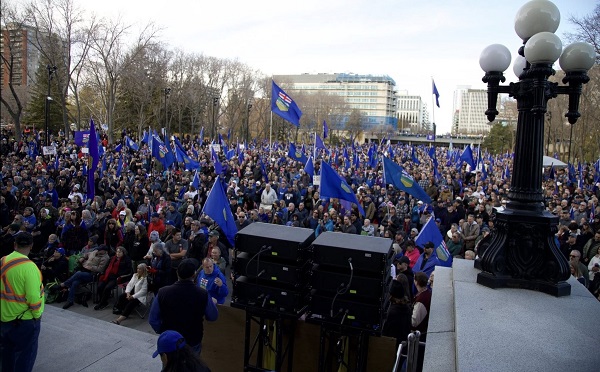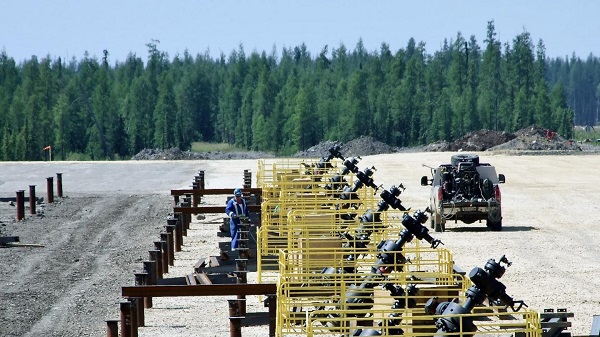conflict
Ukraine And Russia Scramble To Make Territorial Gains In Anticipation That Trump Will Push For Peace Deal

 From the Daily Caller News Foundation
From the Daily Caller News Foundation
Ukraine and Russia are both vying to make territorial gains ahead of President-elect Donald Trump’s inauguration and his expected push for a peace deal.
Trump has said on multiple occasions that he would bring a swift end to the war, relying on his relationships with both Ukrainian President Volodymyr Zelenskyy and Russian President Vladimir Putin and his ability to negotiate with both. In anticipation that Trump will broker a peace settlement in short order, both Russia and Ukraine are making potential last-ditch efforts to grab territory for the other that they could possibly use as leverage during negotiations, according to The Wall Street Journal.
“They’re assaulting all the time—morning, day, night,” a Ukrainian battalion commander told the WSJ.
One current flashpoint is the Kursk region of Russia, which Ukrainian forces seized part of during an invasion over the summer. Russian forces are desperately vying to take back the territory, according to the WSJ. Moscow has deployed roughly 45,000 troops to the region, and in recent weeks has taken back half of it. North Korea has additionally deployed 10,000 troops to Kursk to aid Russian forces.
Meanwhile, Ukraine has been making use of U.S.-provided long-range missiles to strike targets deep inside Russia, the first time Ukraine has been allowed to do so after two years of war. President Joe Biden’s decision to let Ukraine use the missiles puzzled some national security experts, given the national security risks.
There’s some concern in Kyiv that Trump will approach U.S. support for Ukraine differently than Biden has, and that Trump’s bid to end the war could end up benefiting Russia, according to the WSJ. Ukraine believes Russia wants to retake Kursk before Trump is inaugurated.
“It’s the best Ukrainian forces against the best Russian forces,” a Ukrainian sergeant fighting in Kursk told the WSJ. “At this rate, I see no reason for us to withdraw.”
Russia is losing roughly 1,000 men a day in the fight to retake Kursk, some Ukrainian troops told the WSJ. Russia has lost an estimated 700,000 fighters total since the war began.
Ukraine is betting that if it can hold onto Kursk, it can use the region as leverage in future ceasefire negotiations with Russia, according to the WSJ.
“The Ukrainian strategy there is to hold on to it as a bargaining chip and obtain a favorable attrition ratio vis-à-vis the Russians,” Vienna-based military analyst Franz-Stefan Gady told the WSJ. While it would be difficult for Ukraine to hold on to Kursk, Gady said, “I think the Russians will have a tough fight.”
But the sentiment among some Ukrainian soldiers is wavering, with some feeling anger or confusion toward the Kursk operation and whether it was worth the cost, according to the WSJ. And Moscow hasn’t stopped throwing men toward the frontlines. Ukraine has suffered from a lack of manpower since the war began, and fighters don’t have access to the same military or communication equipment that Russia does.
“I think they’ll eventually push us back,” the Ukrainian battalion commander told the WSJ. “They add more power and more resources, and they have a goal to reach the border at any cost, so they will do it.”
Artificial Intelligence
AI Drone ‘Swarms’ Unleashed On Ukraine Battlefields, Marking New Era Of Warfare


From the Daily Caller News Foundation
Artificial intelligence-powered drones are making their first appearances on the battlefield in the Russia-Ukraine war as warfare creeps closer to full automation.
In bombardments on Russian targets in the past year, Ukrainian drones acting in concert were able to independently determine where to strike without human input.
It’s the first battlefield use of AI “swarm” technology in a real-world environment, a senior Ukrainian official and Swarmer, the company who makes the software, told the Wall Street Journal in a Tuesday report. While drones have increasingly defined modern battlefields, swarms until now had been confined to testing rather than combat.
“You set the target and the drones do the rest,” Swarmer Chief Executive Serhii Kupriienko told the WSJ. “They work together, they adapt.”
So far, the Swarmer technology has been used hundreds of times to target Russia assets, but was first used a year ago to lay mines on the front, the Ukrainian official told the WSJ. The software has been tested with up to 25 drones at once, but is usually utilized with only three.
Kupriienko told the WSJ that he was preparing to test up to 100 drones at once with the linking software.
A common arrangement used on the battlefield includes one reconnaissance drone to scout out the target and two explosive drones delivering the payload on target, the official told the WSJ.
While Western nations such as the U.S., France and the United Kingdom are also pursuing drone swarm technology, they have not deployed swarm technology on the battlefield the way Ukraine has, according to the WSJ. Currently, autonomous weapons are not regulated by any international authority or binding agreement, but ethical concerns around the technology has led many to call for increased regulation of weapons like the Swarmer system.
The Ukrainian Ministry of Foreign Affairs did not immediately respond to the Daily Caller News Foundation’s request for comment.
conflict
Trump Pentagon Reportedly Blocking Ukraine From Firing Western Missiles Deep Into Russia


From the Daily Caller News Foundation
The Department of Defense has spent months blocking the Ukrainian military from using American and British-made missiles to hit targets deep inside Russia, The Wall Street Journal reported Sunday, citing unnamed U.S. officials.
Undersecretary of Defense for Policy Eldridge Colby reportedly designed the procedure to review requests to carry out the long-range strikes with weapons that are either of U.S. origin or that require American intelligence or use components provided by the U.S., according to the WSJ. Secretary of Defense Pete Hegseth reportedly has the final say on whether Ukrainian forces can use the MGM-140 ATACMS (Army Tactical Missile System) to hit targets in Russia.
The reported blocks on missile strikes coincides with a Trump administration effort to broker a peace deal between Russia and Ukraine. A Pentagon spokesperson declined to comment further on the matter.
BREAKING: President Vladimir Putin reacts to B-2 Flyover pic.twitter.com/1mzVn7DxlW
— Jack Poso 🇺🇸 (@JackPosobiec) August 15, 2025
The Biden administration allowed Ukraine to carry out strikes with ATACMS in November, weeks after President Donald Trump won the 2024 election, the New York Times reported. Trump criticized the move during a December interview with Time magazine.
“It’s crazy what’s taking place. It’s crazy,” Trump said. “I disagree very vehemently with sending missiles hundreds of miles into Russia. Why are we doing that? We’re just escalating this war and making it worse. That should not have been allowed to be done.”
Trump and Russian President Vladimir Putin met in Alaska on Aug. 15 for a summit meeting during which Trump sought to secure a cease-fire in Russia’s war with Ukraine. As Trump greeted Putin, a B-2A Spirit stealth bomber and several fighters carried out a flyover of Elmendorf Air Force Base.
Trump met with Ukrainian President Volodymyr Zelensky and major European leaders on Aug. 18 to update them on the summit.
In July, Trump reached an agreement with NATO where members of the alliance would purchase weapons, including MIM-104 Patriot surface-to-air missiles, and donate them to Ukraine.
-

 Business1 day ago
Business1 day agoTrans Mountain executive says it’s time to fix the system, expand access, and think like a nation builder
-

 Alberta2 days ago
Alberta2 days agoPremier Smith sending teachers back to school and setting up classroom complexity task force
-

 Alberta2 days ago
Alberta2 days agoThousands of Albertans march to demand independence from Canada
-

 Crime2 days ago
Crime2 days agoSuspect caught trying to flee France after $100 million Louvre jewel robbery
-

 Economy1 day ago
Economy1 day agoStunning Climate Change pivot from Bill Gates. Poverty and disease should be top concern.
-

 Addictions2 days ago
Addictions2 days agoThe Shaky Science Behind Harm Reduction and Pediatric Gender Medicine
-

 Business1 day ago
Business1 day agoFlying saucers, crystal paperweights and branded apples: inside the feds’ promotional merch splurge
-

 International1 day ago
International1 day agoBiden’s Autopen Orders declared “null and void”







